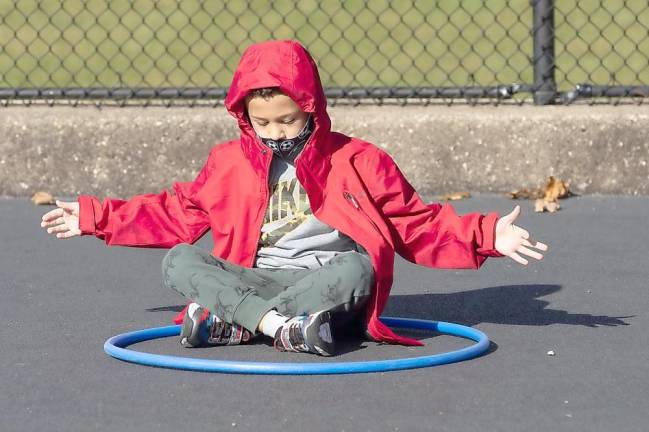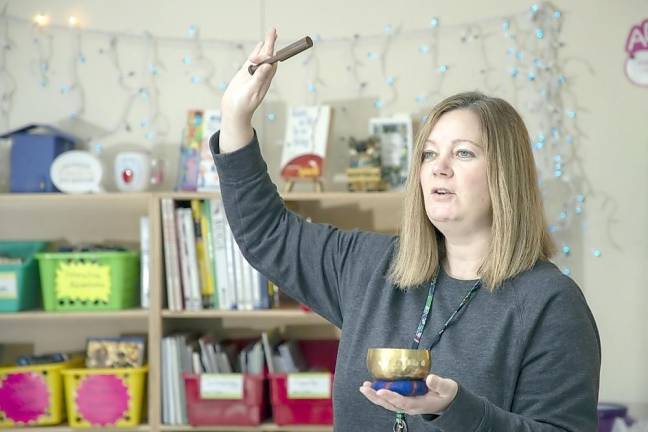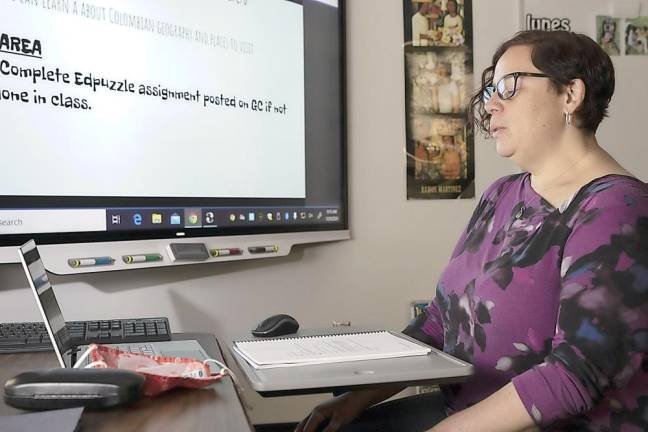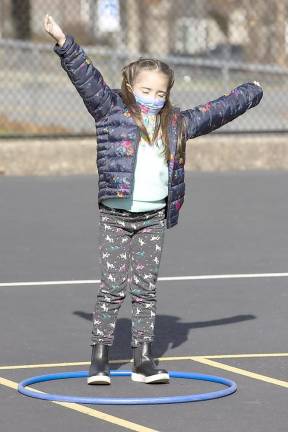Warwick Valley School District expands mindfulness program
Warwick. The program’s intent is to help families and district staff to help maintain focus during the pandemic.




For those wanting to learn how to reduce stress, enhance their ability to focus and create new ways of controlling their breathing, the Warwick Valley School District has brought mindfulness to the community.
Mindfulness started in physical education classes and has been growing over the past couple years to reach more and more students. This year, the district has expanded its student-oriented program of mindfulness, meditation and breathing exercises to now include staff, teachers and student families.
The program is intended to address the need to reduce stress and build inner muscles of the mind to support focus and positive mindsets. The COVID-19 pandemic has made these skills even harder to achieve.
Virtual Family Yoga Night
Programs educating staff and families are scheduled throughout the year.
For example, Park Avenue, Sanfordville and Pine Island elementary school families have participated in a Virtual Family Yoga Night from Home.
Another similar event is scheduled for March 11. Teachers who have learned skills to lead sessions for their students are now involved in training sessions focused on their own mindfulness.
Staff and families engage with Zensational Kids, which partners with the district for mindfulness training and session leadership. Zensational Kids helps educational communities unlock that potential through the implementation of evidence-based yoga and practices that build social and emotional learning, coping skills and self-regulation strategies.
‘Having tools that they can use’
“Our program has really been about teaching students self-awareness and self-management tools so that they can find compassion for themselves and understand how their brain and body work together,” said Zensational Kids founder Allison Morgan. “It’s also about having tools that they can use for when they are getting anxious and engaging in negative self-talk.”
These tools are applicable to anyone – students, teachers, staff and families, she said. “These are things we’ve been sharing with students for the past 10 years. But, in times like these, they are essential across the board to everyone.”
In its third year of partnership with the District, Zensational Kids is conducting the program virtually to maintain safety and reduce the spread of the coronavirus during the pandemic. Sessions are streamed into staff training sessions and into classrooms where Zensational Kids trainers work directly with educators and their students to teach them mindfulness tools and into homes, providing group sessions with families and caregivers.
In some ways, Morgan said, virtual training has helped people who are new to these strategies, try something that may be outside their comfort zone.
“When using these techniques we are often closing our eyes, we are breathing, we are moving our bodies in specific patterns with our breath,” Morgan said. “Not everyone is comfortable doing this in a large room with colleagues or other parents. Now, they’re in their own space, so it actually helps them become more willing to try it.”
Kids participating with their parents
Park Avenue Elementary guidance counselor Jeanette Myrick said the school began supporting families during the shutdown last spring, offering two family yoga nights that involved yoga, meditation and mindfulness.
“The kids participated with their parents, so it was a nice bonding activity for them,” she said. “So, we decided to do it again this year, because it was so well received last year. We really wanted to help support parents and families. We wanted them to see some of the activities and be able to do them with their kids.”
“The whole concept behind it is teaching staff, teaching kids, teaching all of us how to be more purposeful and mindful in the present moment which takes away a lot of that stress, because if you are mindful in the present moment, you’re not thinking of the other 10 things you have to do this afternoon, this week or whatever,” Myrick said.
‘You can face it more calmly and clearly’
Morgan said the emotional health of teachers across the nation is at an all-time low. They are feeling the pressure of teaching in a hybrid or remote learning environment. Rachel Heller, a seventh-grade Spanish teacher at the Middle School, has been practicing for years and uses yoga practically every morning before going to work so she can face the day calmly.
She said she gives her students a few minutes at the beginning of class to help them reduce stressful situations.
“Any sort of stressful situation can be faced using mindfulness, so you can face it more calmly and clearly,” she said. “This is a perfect time to be doing it (because of the pandemic). There’s no more perfect time to do it,” she added with a laugh. “But it could be anytime. One of my students has shared how mindfulness has helped her in different situations. And, whatever she is feeling when she comes into my classroom she knows she can deal with it because we’re going to be sitting there doing some mindfulness.”
Feel your toes, your knees, your head
Diana Piascik, a fifth-grade teacher at the Middle School, began training sessions through the district two years ago. She opens her classroom with a mindfulness exercise, typically something where students – with their eyes closed – are asked if they feel their toes, their knees, all the way up to their head. As a way to focus, they listen to Piascik’s Tibetan singing bell and raise their hands when they cannot hear it anymore. Then, she asks them how they feel.
“The kids say they feel much calmer,” she said.
“It’s two minutes of my day and it makes a huge impact on learning,” Piascik said. “I know as an educator a lot of our time is spent on ‘What are you going to teach?’ and ‘What are you going to do?’ but if the kids don ’t have the presence of mind to accept the lessons, then I find the 2 minutes of mindfulness super valuable. ... It enhances the time we have.”
‘We can’t give of ourselves if we have nothing to give from ourselves’
Heller said although she has been practicing mindfulness and meditation through yoga for years, she learned through the district’s training how important it was to make sure she was calm and grounded first so she could give everything to her students.
“The great part about the training is the first thing you do is work on yourself. ... We can’t give of ourselves if we have nothing to give from ourselves. The instructor told us that we need to make sure that we are good first. We need to put ourselves in a position where we are as calm as possible and as open as possible and mindful all the time. Be in the moment (and focused),” she said. “Mindfulness teaches you to listen to yourself. To trust what you need. Trust your body and your mind to tell you what you need.”
‘The mind is a muscle’
These are skills that everyone can learn and use throughout their lifetime.
“The mind is a muscle. What we’re doing is we’re training the mind to build focus, attention and positivity,” said Ms. Morgan. “It’s a skill and it’s a skill that can be taught. It’s the same thing with empathy and compassion.
These are skills that can be taught. And we know that when we teach empathy, compassion, focus, and attention, students are better equipped to relax and stay calm. When we teach these things we know that our students do better, but we also know that all individuals who cultivate these skills are happier and more resilient. Studies show that happiness and resilience are the foundation for creating greater health and success throughout your life.